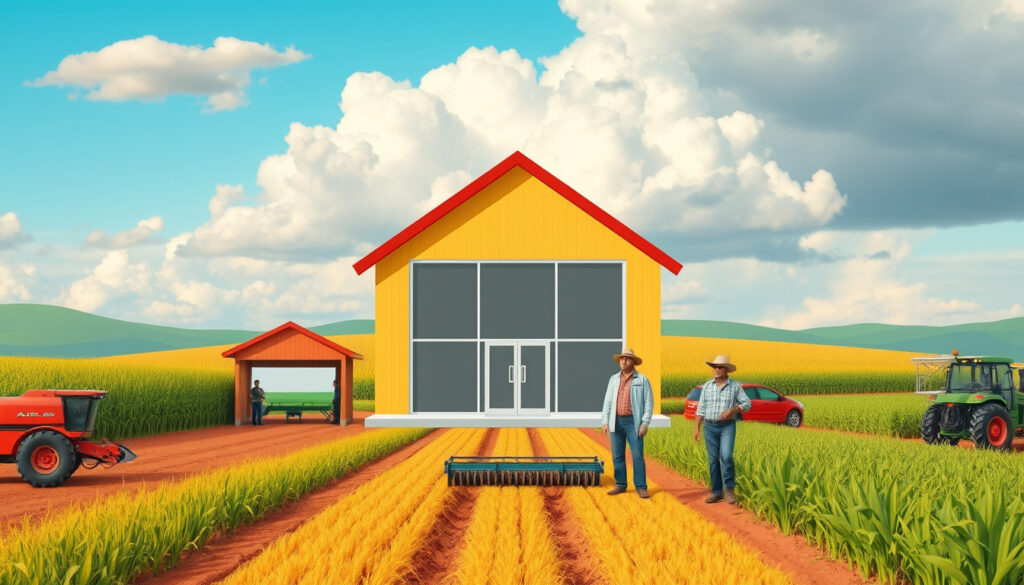Well, folks, it seems the USDA has hit the ‘close’ button on 110 of their offices across the U.S., and let me tell you, that’s a closure bigger than the gap between my dad’s jokes and my ability to endure them! This hefty decision was made under the Department of Government Efficiency (or as I like to call it, the ‘Department of Efficiency… or Else’), as they seek to save on rental costs by shuttering facilities that are emptier than my wallet at the end of a month.
Now, you might be wondering, what does this mean for our farmers and their sorrows over reduced agricultural support services? Well, grab your plow and let’s dig into the dirt!
With states like Indiana, Kansas, Oklahoma, Missouri, and Minnesota feeling the brunt of this closure fiasco, some farmers might be left wondering if they’re going to be cultivating crops or just cultivating confusion. It’s not a joke when I say that these offices provide crucial resources like disaster assistance, conservation planning, and loan applications. After all, who wants to plant a crop without knowing if they can harvest anything?
As we munch on the cheesy details of what this means for agriculture, let’s root for those farmers as we explore what the future has in store for agricultural support amid these growing concerns! And don’t worry, I’ve got plenty of puns to go around – because sometimes they really *turnip* the laughter!

Key Takeaways
- The closure of 110 USDA offices is expected to significantly hinder farmers’ access to crucial support services.
- States will feel the impact of office closures differently, with Indiana being the hardest hit.
- Recent layoffs and the court-ordered rehiring complicate the USDA’s ability to maintain effective agricultural support.
Impact on Farmers’ Access to Resources
Ah, the age-old question: How many farmers does it take to change a light bulb? None, they prefer to stick to their fields! Unfortunately, in our current world of agricultural support, it seems we’re heading into a murkier patch without enough light. The recent decision to close 110 USDA offices nationwide, courtesy of the Department of Government Efficiency, has sparked a whirlwind of concerns among our hardworking farmers. The closures, aimed at trimming costs by shutting down offices with low traffic, seem to be doing precisely the opposite when it comes to resources for farmers. With Indiana getting the short straw (8 offices closed—ouch!), followed by Kansas (6), Oklahoma (5), Missouri (4), and Minnesota (3), farmers in these states are left wondering who will help them when disaster strikes or when they need to apply for loans. Talk about leaving them out in the fields! For example, the Topeka office in Kansas, which has gathered more dust than a scarecrow faced with a windstorm (it hasn’t been used in three years!), is also on the chopping block. This comes on the heels of a significant workforce reduction earlier this year where 5,000 USDA staff were pink-slipped—only to find themselves in a pickle with a court order to rehired! It’s a classic case of government efficiency feeling more like government inefficiency. So as farmers look to the horizon, they might just find a few less safety nets to catch them when things go wrong. Let’s hope the government finds a way to turn this agricultural frown upside down—after all, we’re rooting for them!
Government Response and Future of Agricultural Support
As the dust settles on this seismic shift within the USDA, questions abound regarding the future of agricultural support amidst these closures. Will farmers start feeling like they’re in a ‘Field of Dreams,’ hoping that if they cultivate enough trust, the government will simply appear? It’s a tough position; without local offices to offer guidance on disaster assistance or conservation planning, the path ahead can feel rather unplowed. And let’s not forget those all-important loan applications! Who knew applying for a loan could feel like trying to find a needle in a haystack? Plus, with a sizable workforce reduction—5,000 employees let go like they were last in a sack race—and the added wrinkle of a court-ordered rehiring, it’s hard not to chuckle (or perhaps groan) at the twists and turns of government bureaucracy. As farmers navigate these bumpy roads, the question remains—how can they keep their operations thriving while faced with fewer resources? Let’s just hope our farmers don’t have to resort to raising their concerns like corn—standing tall and hoping someone notices!
Learn more about agriculture news by following us! And don’t forget to try Seaghetti now – sustainable food at its best.
